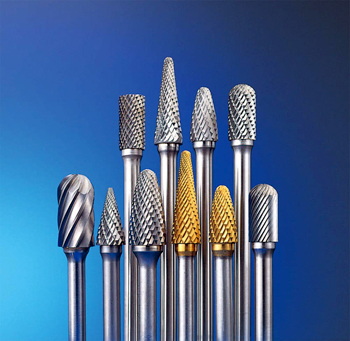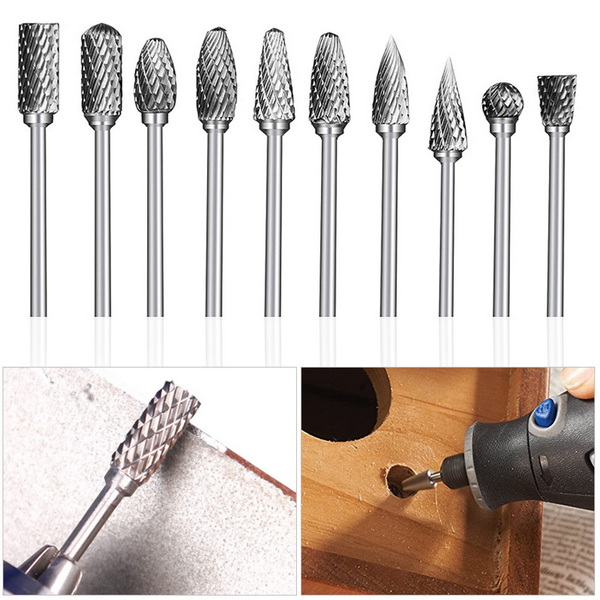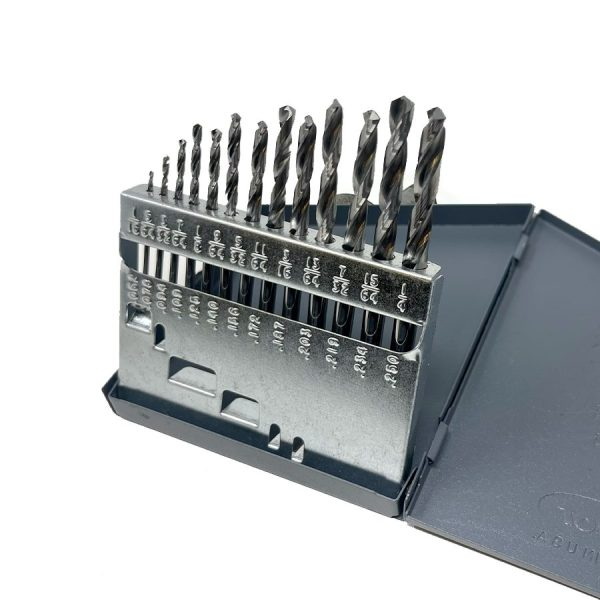Content Menu
● Introduction
● What Is Tungsten Carbide?
● What Is Titanium?
● Composition and Manufacturing
>> Tungsten Carbide
>> Titanium
● Physical and Mechanical Properties
● Durability and Hardness
● Weight and Density
● Corrosion and Chemical Resistance
● Applications in Industry
>> Tungsten Carbide
>> Titanium
● Jewelry: Tungsten Carbide vs Titanium Rings
● Cost and Value
● Environmental Impact
● Historical Background
● Maintenance and Care
● Future Trends
● Practical Advice for Choosing Between Tungsten Carbide and Titanium
● Conclusion
● FAQ
>> 1. What are the main differences in hardness between tungsten carbide and titanium?
>> 2. Which material is better for people with sensitive skin?
>> 3. Can tungsten carbide and titanium rings be resized?
>> 4. Which material is more suitable for high-temperature environments?
>> 5. How do the costs of tungsten carbide and titanium compare?
Tungsten carbide and titanium are two of the most advanced engineering materials in the world, each offering a unique blend of properties that make them indispensable across industries ranging from aerospace and medical to jewelry and manufacturing. This comprehensive guide explores their origins, properties, applications, and the crucial differences that set them apart, helping you understand which material is best suited for your needs.

Introduction
In the world of high-performance materials, few names carry as much weight as tungsten carbide and titanium. Whether you're choosing a wedding band, selecting materials for aerospace components, or designing medical implants, the decision between these two can have a significant impact on performance, longevity, and even aesthetics. Understanding their differences is key to making an informed choice.
What Is Tungsten Carbide?
Tungsten carbide is a compound formed by combining tungsten and carbon atoms, resulting in one of the hardest and most wear-resistant materials known to science. Unlike pure tungsten, which is a heavy, dense metal, tungsten carbide is technically a ceramic-metal composite (cermet) that is often bonded with a metallic binder such as cobalt or nickel to enhance toughness.
Key Features:
- Extremely high hardness—ranks 8.5 to 9 on the Mohs scale.
- Exceptional wear and abrasion resistance.
- High density, giving it a substantial, weighty feel.
- Retains strength and structure at very high temperatures.
- Commonly used in cutting tools, industrial machinery, and jewelry.
What Is Titanium?
Titanium is a transition metal renowned for its combination of low density, high strength, and excellent corrosion resistance. It is often alloyed with elements like aluminum and vanadium to enhance its mechanical properties. Titanium is naturally biocompatible, making it a preferred choice for medical implants and devices.
Key Features:
- Lightweight, with a density of about 4.5 g/cm³.
- High strength-to-weight ratio.
- Excellent corrosion resistance, especially in marine and medical environments.
- Hypoallergenic and biocompatible.
- Used in aerospace, medical, marine, and jewelry industries.
Composition and Manufacturing
Tungsten Carbide
- Composition: Typically 94% tungsten and 6% carbon, with a metallic binder (often cobalt or nickel).
- Manufacturing: Produced by powder metallurgy—tungsten and carbon powders are mixed, pressed, and sintered at high temperatures to form a dense, hard material.
Titanium
- Composition: Pure titanium or alloys (commonly with aluminum, vanadium, tin).
- Manufacturing: Extracted from ores like ilmenite or rutile using the Kroll process, then melted and alloyed as needed.
Physical and Mechanical Properties
| Property | Tungsten Carbide | Titanium |
| Color | Grayish metallic | Silvery white |
| Density (g/cm³) | 15.6–15.8 | 4.5 |
| Mohs Hardness | 8.5–9 | 6 |
| Melting Point (°C) | 2,870 | 1,668 |
| Tensile Strength (psi) | ~142,000 | ~63,000 |
| Thermal Conductivity (W/m·K) | 173 | 21.9 |
Durability and Hardness
Tungsten Carbide:
- Among the hardest substances after diamond.
- Extremely resistant to scratching and abrasion.
- Brittle—can crack or shatter under sharp impact.
Titanium:
- Not as hard as tungsten carbide but far tougher.
- More resistant to cracking—will bend rather than shatter.
- Durable under repeated stress and fatigue.
Weight and Density
- Tungsten carbide is exceptionally heavy, giving jewelry and tools a substantial, premium feel. This density is advantageous in applications where mass is required for stability, such as counterweights or high-impact tools.
- Titanium is remarkably light—about one-third the weight of tungsten carbide—making it ideal for aerospace, sports equipment, and wearable items where comfort and reduced weight are priorities.
Corrosion and Chemical Resistance
- Tungsten carbide offers good corrosion resistance but can oxidize under extreme conditions or prolonged moisture exposure.
- Titanium is one of the most corrosion-resistant metals, forming a protective oxide layer that makes it virtually immune to rust, even in seawater and aggressive chemical environments. This property is why titanium is so prevalent in marine, medical, and chemical processing industries.
Applications in Industry
Tungsten Carbide
- Cutting Tools: Drill bits, saw blades, and end mills for machining hard materials.
- Industrial Machinery: Wear-resistant parts, nozzles, and dies.
- Aerospace & Oil/Gas: Coatings for turbine blades, valves, and drilling equipment.
- Jewelry: Particularly men's rings, prized for scratch resistance and luster.
Titanium
- Aerospace: Aircraft frames, engine components, and fasteners.
- Medical: Implants (joint replacements, dental implants), surgical instruments.
- Marine: Propeller shafts, rigging, and underwater equipment.
- Sports Equipment: Bike frames, golf clubs, and tennis rackets.
- Jewelry: Rings, bracelets, and body piercings for sensitive skin.

Jewelry: Tungsten Carbide vs Titanium Rings
| Feature | Tungsten Carbide Rings | Titanium Rings |
| Hardness | Extremely high | Moderate |
| Scratch Resistance | Superior | Good |
| Crack Resistance | Brittle (can shatter) | Tough (bends, not breaks) |
| Weight | Heavy | Lightweight |
| Comfort | Substantial feel | Barely noticeable |
| Resizing | Difficult/impossible | Easier |
| Hypoallergenic | Usually, but check binder | Yes |
| Appearance | Mirror-like finish | Matte or polished, can be colored |
- Tungsten carbide rings are chosen for their scratch resistance and luxurious weight, but they are more brittle and cannot be resized.
- Titanium rings offer comfort, hypoallergenic properties, and flexibility in design, but are more prone to scratches.
Cost and Value
- Tungsten carbide is generally more expensive than titanium due to its manufacturing complexity and raw material cost, but its longevity in wear applications may offset the initial investment.
- Titanium is moderately priced, with costs influenced by alloying and processing requirements. Its widespread use in aerospace and medical industries has driven innovations that keep prices competitive.
Environmental Impact
- Both materials require significant energy for extraction and processing.
- Tungsten carbide production is energy-intensive and recycling is complex, though possible.
- Titanium is less abundant and more expensive to extract, but its corrosion resistance and longevity can reduce lifecycle environmental impact.
Historical Background
The history of tungsten carbide and titanium dates back to the early 20th century when advancements in metallurgy and material science began to revolutionize industrial manufacturing. Tungsten carbide was first developed in the 1920s and quickly gained popularity due to its exceptional hardness and wear resistance. It became a game-changer in cutting tools and industrial applications, enabling faster machining and longer tool life.
Titanium, discovered in the late 18th century, saw its industrial potential realized much later, particularly during and after World War II. Its unique combination of strength, lightness, and corrosion resistance made it invaluable in aerospace and military applications. Over the decades, titanium alloys have been refined to enhance their performance in various fields.
Maintenance and Care
Proper maintenance can significantly extend the life of both tungsten carbide and titanium products. Tungsten carbide jewelry, for example, should be cleaned with mild soap and water and stored separately to avoid scratches. Despite its hardness, it can chip or crack if dropped on hard surfaces.
Titanium items are easier to maintain due to their corrosion resistance. They can be cleaned with standard jewelry cleaners and are less prone to damage from everyday wear. However, titanium can scratch more easily than tungsten carbide, so care should be taken to avoid abrasive surfaces.
For industrial applications, regular inspection and appropriate lubrication (where applicable) can help maintain the performance of both tungsten carbide and titanium components. In high-wear settings, timely replacement of worn parts ensures safety and efficiency.
Future Trends
As technology advances, both tungsten carbide and titanium continue to evolve. Researchers are exploring new composite materials and coatings to improve the toughness of tungsten carbide, aiming to reduce its brittleness while maintaining hardness. Similarly, titanium alloys are being developed with enhanced strength and fatigue resistance, expanding their use in critical applications like biomedical implants and aerospace components.
Additive manufacturing (3D printing) is also opening new possibilities for titanium, allowing for complex geometries and customized parts that were previously impossible or too costly to produce. The ability to print titanium components directly from digital designs is revolutionizing the medical, aerospace, and even jewelry industries, enabling rapid prototyping and bespoke solutions.
Environmental considerations are also shaping the future of both materials. Efforts are underway to improve recycling and reduce the carbon footprint associated with extraction and processing. As demand for sustainable solutions grows, both tungsten carbide and titanium are likely to see innovations that make them more eco-friendly and accessible.
Practical Advice for Choosing Between Tungsten Carbide and Titanium
When deciding between tungsten carbide and titanium, consider the following:
- For applications requiring extreme hardness and scratch resistance, tungsten carbide is the superior choice.
- If weight and comfort are priorities, especially for wearable items, titanium is preferable.
- For medical or sensitive skin applications, titanium's biocompatibility makes it the safer option.
- Consider the environment: titanium excels in corrosive or marine settings, while tungsten carbide is better suited for high-temperature industrial uses.
- For situations where resizing or long-term flexibility is important, titanium is the better option due to its ability to be resized and shaped.
- If you desire a piece of jewelry with a substantial, premium feel, tungsten carbide's density and finish may be more appealing.
Conclusion
Tungsten carbide and titanium are both extraordinary materials, but their differences are pronounced. Tungsten carbide stands out for its unmatched hardness, scratch resistance, and substantial weight, making it ideal for heavy-duty tools and statement jewelry. Titanium, on the other hand, excels in applications where lightweight strength, corrosion resistance, and biocompatibility are paramount. Your choice between the two should be guided by the specific demands of your application—whether you need the indestructible edge of tungsten carbide or the versatile, lightweight resilience of titanium.

FAQ
1. What are the main differences in hardness between tungsten carbide and titanium?
Tungsten carbide is significantly harder than titanium, ranking 8.5–9 on the Mohs scale compared to titanium's 6. This makes tungsten carbide much more scratch-resistant, but also more brittle. Titanium, while softer, is tougher and less likely to crack or shatter.
2. Which material is better for people with sensitive skin?
Titanium is naturally hypoallergenic and biocompatible, making it ideal for people with sensitive skin or allergies. Tungsten carbide is generally hypoallergenic, but the binders used (such as nickel or cobalt) can sometimes cause reactions in sensitive individuals.
3. Can tungsten carbide and titanium rings be resized?
Titanium rings can often be resized, though it may require specialized equipment. Tungsten carbide rings, due to their extreme hardness and brittleness, cannot be resized and must be replaced if the fit changes.
4. Which material is more suitable for high-temperature environments?
Tungsten carbide has a much higher melting point and retains its strength at elevated temperatures, making it better suited for applications involving extreme heat, such as cutting tools and industrial machinery. Titanium, while still heat-resistant, is more commonly used where moderate heat and corrosion resistance are required.
5. How do the costs of tungsten carbide and titanium compare?
Tungsten carbide is typically more expensive due to its manufacturing process and material costs. Titanium, while not cheap, is more widely available and often less costly, especially when used in alloys for industrial applications.
















